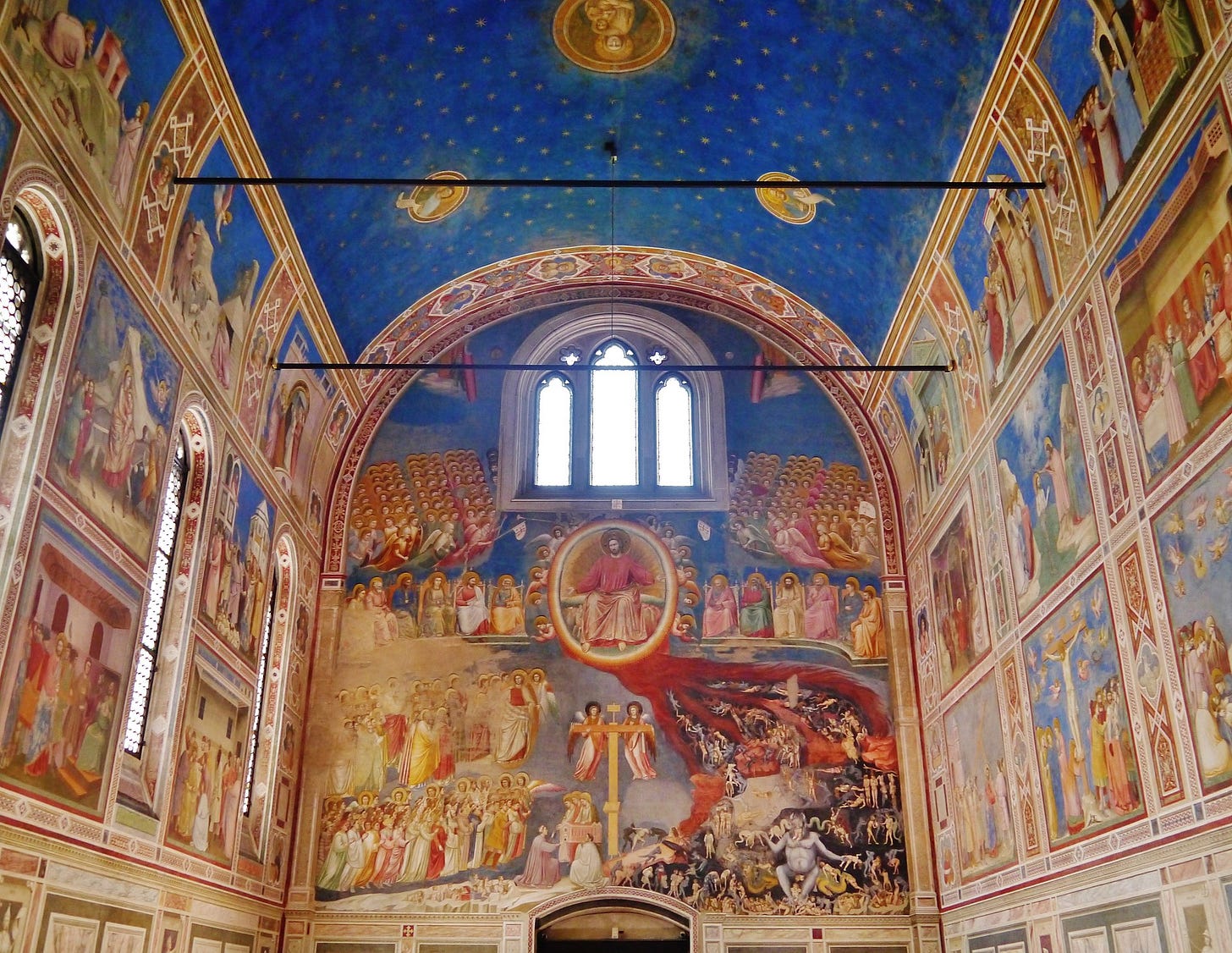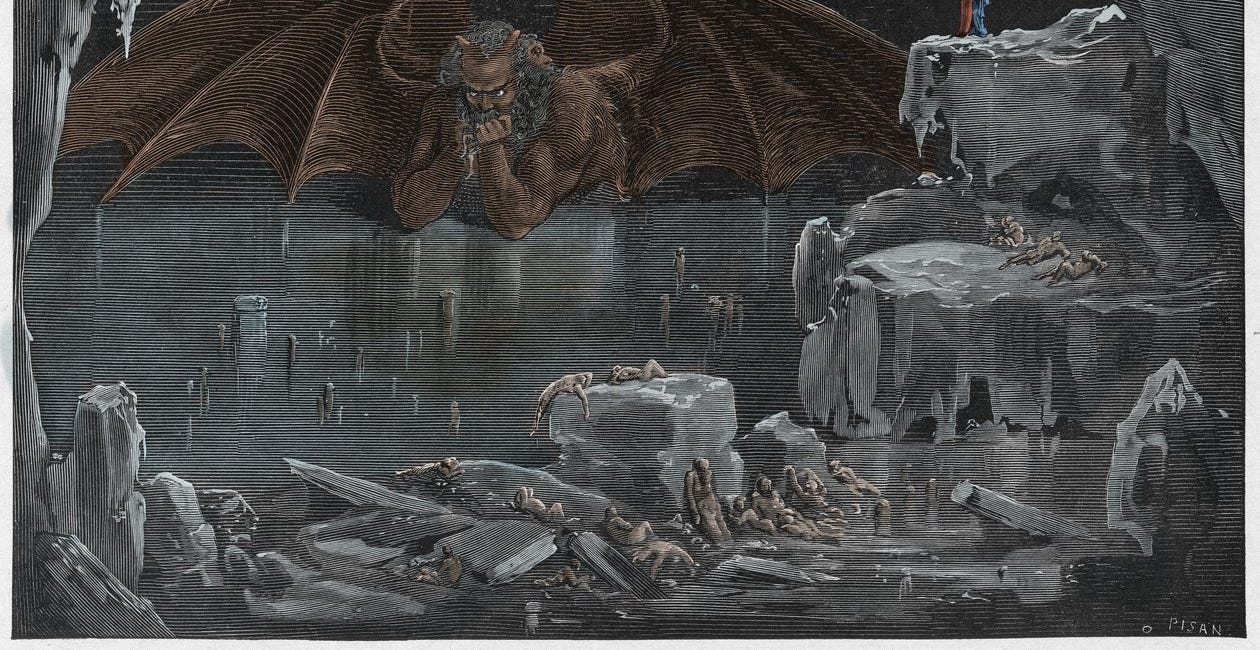Last Judgments
How a story that threatens punishments still captivates humanity and one of the greatest achievements of Western civilization.
I used the plural because we have many depictions of humanity’s end—in prose and poetry, as well as images.
As early as the fifth century BC, one of religion’s aims has been to contain humanity’s (self)destructive forces. A hypothesis in Sysiphus’ fragment attributed to Greek Sophist Critias stipulates that the gods were intended to curb human proclivities and enforce moral behavior.1
What do the promise of eternal life, central to Christianity, and the threat of eternal punishment represent for us today?

Before we get into the mechanisms we use to restrain antisocial tendencies in individuals and groups, I want to talk about how art played a crucial propagandist role for the Church, with an Italian twist during the Counter-reformation.
For online access to series, topic break-downs, full archives and The Vault.
The first time I saw a painting of the Last Judgment was in the Sistine Chapel, Vatican, Rome. Michelangelo’s mastery, restored to its quasi original form and intent, transmitted the sense of confusion and reflected the insecurities of a new era.
It depicted the end of an era, a watershed moment in the history of art and human thought. The strong and confident man of Humanism and the early Renaissance (Michelangelo himself had exalted in the Ignudi2 of the vault) was replaced by a chaotic and anguished vision that affected both the damned and the blessed. A total lack of certainties.
I was familiar with the story from the Bible,3 which was required reading at CCD class4 when I was too young to tackle the book of Revelation.
However, it was Dante’s Inferno that reflected the drift and chaos of the coming era. I read him in my late teens—the fervor and the power of his words resonated. Virgil makes the point that on the Day of Judgment, each soul will return to its body and hear what echoes throughout eternity: its final sentence of condemnation.
In the union of body and soul every feeling is amplified, says Virgil. In fact, according to Aristotelian science, this union creates the perfect form. Therefore souls will feel more good or more pain, based on the judgment they receive.
What you can Learn from Dante's Inferno and its 9 Circles
I consider myself fortunate to have had the opportunity to read each of the books in the Divina Commedia several times over with famous researchers and scholars. Dante’s is by far the trilogy I’d take with me anywhere.
“In the end a gaggle of angels
Will appear and, as if going to bed,
They'll snuff out the lights, and that will be goodnight.”
— Giuseppe Gioacchino Belli, Judgment Day (Er Giorno der Giudizzio, 1831)
Another painting I saw only recently struck a chord with me for a different reason. In a small church next to the Augustinian monastery in Padua, the Scrovegni Chapel, is Giotto’s version of the Last Judgment.

Enrico Scrovegni had inherited an immense fortune but also a terrible reputation. His father Rinaldo was a ‘moneylender,’ a loan shark, in Dante’s Inferno. The construction of the chapel, a small and precious town church, served to restore his family image and present himself as a noble, and above all, devout, benefactor knight.
Keep reading with a 7-day free trial
Subscribe to On Value in Culture to keep reading this post and get 7 days of free access to the full post archives.



